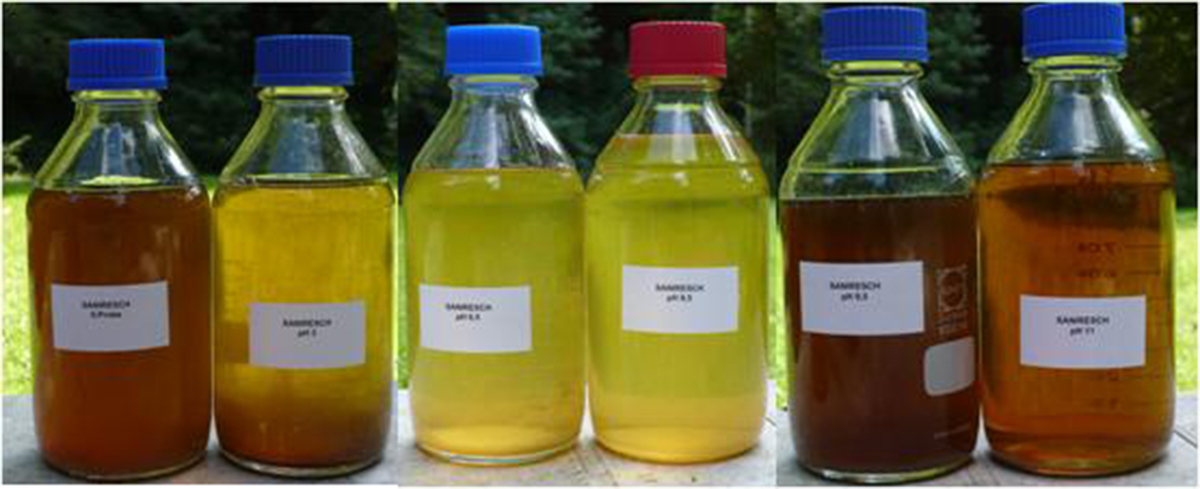Table of Contents
A team of researchers led by led by Jacob Møller-Jensen of the Institute of Biochemistry and Molecular Biology at the University of Southern Denmark have developed a different way of studying bladder infections. They have built an artificial bladder lined with real bladder cells. They have used the artificial bladder to study how E. coli behaves at every stage of bladder infection.

Scientists already knew that E. coli can stick to the outermost layer of cells in the bladder to hold themselves in place. E. coli bacteria do this by hooking themselves to a kind of sugar that appears on the surface of bladder cells. It's not the exact sugar you find in table sugar, but it's chemically very close to it. The more sugar there is on your bladder cells, the more places they have to hang on. The bacteria can use sugar to form a connection to bladder cell that is like a barbed arrow into the cell that cannot be pulled out.
READ Mucus In Urine And Other Urinary Tract Symptoms: When You Need To Go To The Doctor
By anchoring themselves into the lining of the bladder, E. coli can grow so thick that they form a biofilm coating the bladder. With the bacteria in close proximity to each other, they can exchange genes that give them antibiotic resistance in something that has been likened to "bacterial sex." The E. coli biofilm doesn't just hold the bacteria in place, they also give them immunity to drug treatment.
The bladder is not completely defenseless against the bacteria's ability to form a biofilm. It will shed its outermost layer of cells to get rid of the infection. That's why you may see white bubbles in your urine when you have a UTI. Those bubbles are like peeling skin after a sunburn, only from the infected lining of your bladder.
However, some "smart" strains of E. coli have a second ability to form hyphae or "roots" in the lining of the bladder. The bacteria first change their shape. They become thin and long in a process called filament formation. They stick not just to the outermost lining of the bladder, but also to cells beneath it. As they pass through the layers of the lining of the bladder, they continue to multiply, but eventually they insert themselves deep into the bladder where they are out of reach of oral antibiotics (but not antibiotics delivered by IV). The bacteria close to the outer layer of the lining die when they come in contact with antibiotics, but other bacteria can become dormant deep inside the bladder. The normal renewal process of the bladder pushes these dormant germs to the lining in time, long after the five or seven or ten days of antibiotics have been completed.
READ Home Remedies For Urinary Tract Infection
The Danish researchers hope eventually to be able to block a gene called Dam X that gives some bacteria to burrow into the bladder and stay dormant until their host is off antibiotic treatment. However, in the meantime, this discovery offers some insight into how you may be able to overcome recurrent bladder infections with the technology currently available:
- You don't need to drink water until you slosh. It's important to avoid dehydration, and if you have so much pain with urination that you don't want to drink you need to see a doctor to get pain medication (usually morphine) so you can stay hydrated.
- Unsweetened cranberry juice and cranberry extracts may be helpful in the very early stages of your very first UTI. They aren't likely to help you a lot once you have had even one UTI.
- The antibiotics that really work are those delivered by IV. In the United States, you can't get IV antibiotics in a doctor's office. You have to get them in an ER or in a hospital. This may seem like a drastic approach to fighting the infection, but they may be the best way to keep from getting a UTI over and over again.
- Khandige S, Asferg CA, Rasmussen KJ, Larsen MJ, Overgaard M, Andersen TE, Møller-Jensen J. DamX Controls Reversible Cell Morphology Switching in Uropathogenic Escherichia coli. MBio. 2016 Aug 2. 7(4). pii: e00642-16. doi: 10.1128/mBio.00642-16. PMID: 27486187.
- Meares EM, Stamey TA. Bacteriologic localization patterns in bacterial prostatitis and urethritis. Invest Urol. 1968 Mar. 5(5):492-518.
- Photo courtesy of
- Photo courtesy of gtzecosan: www.flickr.com/photos/gtzecosan/5268451174/
- Photo courtesy of

